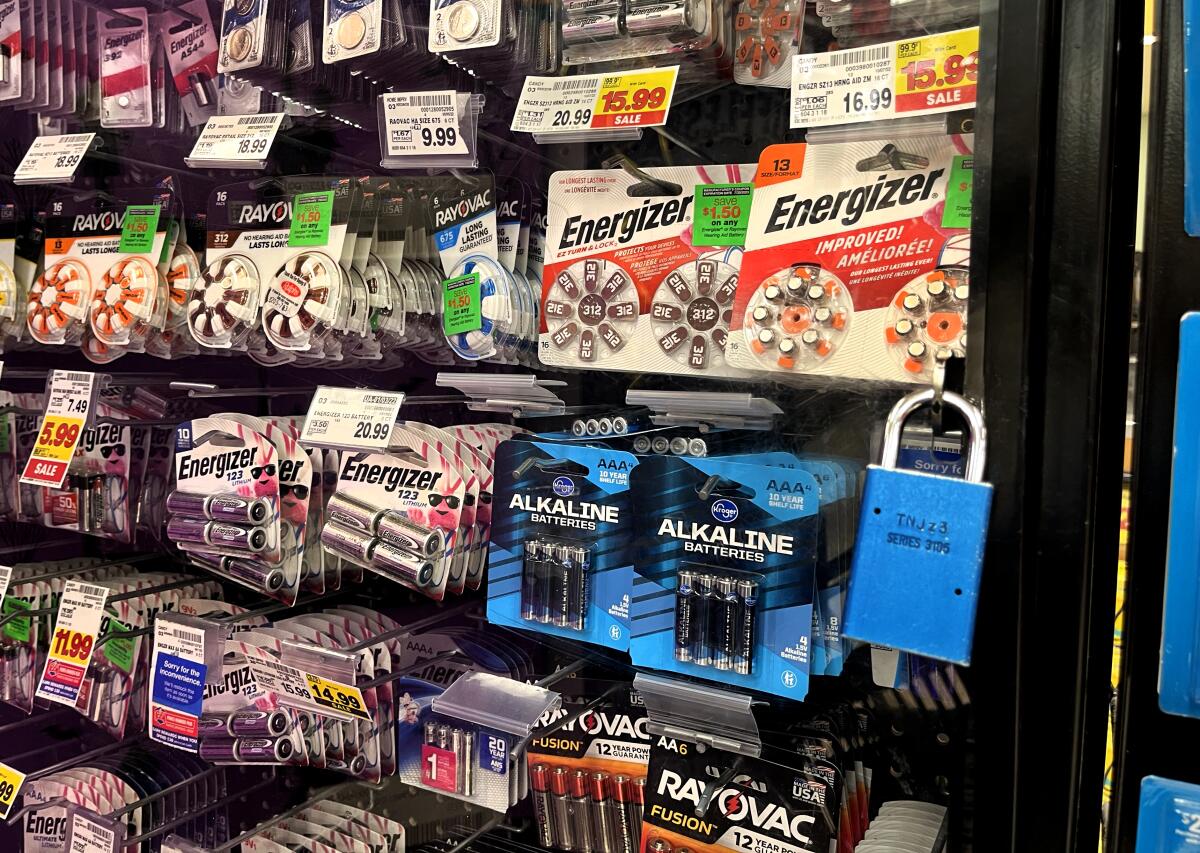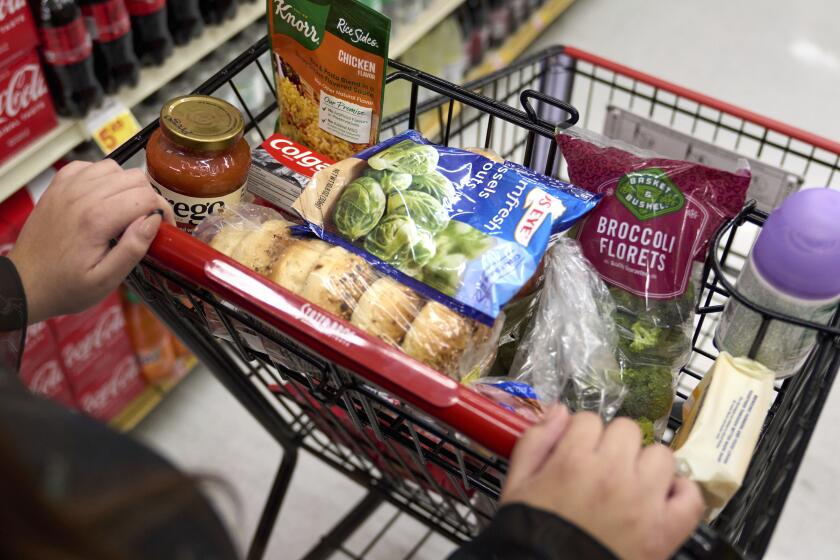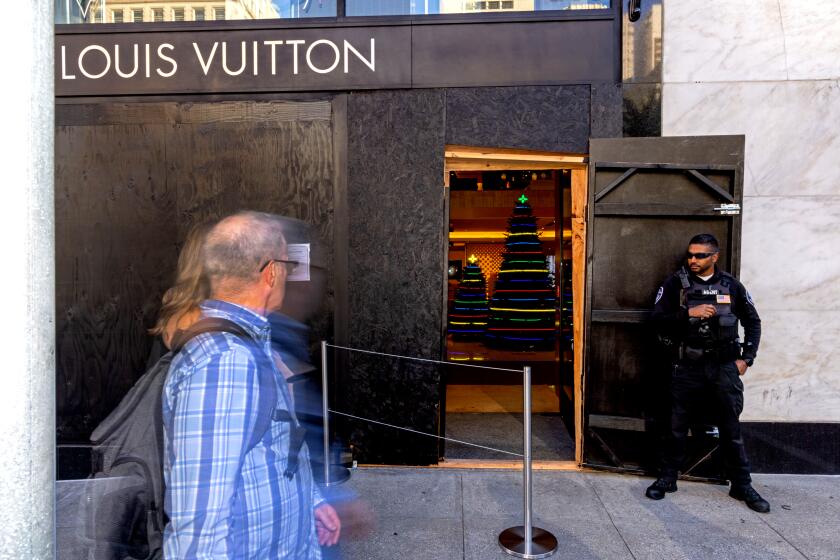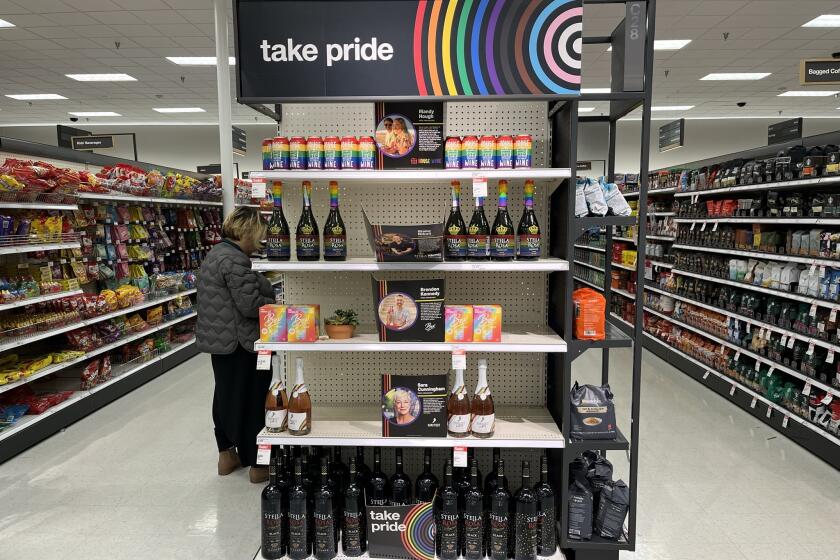Retail theft keeps climbing. California Atty. Gen. Bonta tries a new tactic to fight it

- Share via
California Atty. Gen. Rob Bonta on Tuesday announced a new partnership between the Justice Department and more than a dozen retailers and online marketplaces to crack down on organized retail crime in the state.
To support prosecution, partners including Target, Albertsons and Amazon have signed a pledge that “increases information sharing” between law enforcement, retailers that experience theft and online marketplaces where stolen merchandise can be resold.
“Organized retail crime will not be tolerated,” Bonta said at a news conference. “Not by business, not by law enforcement, not by me. Today, we’re making that abundantly clear.”
The agreement also establishes specific commitments for the brick-and-mortar merchants signing the pact, which include maintaining thorough records of incidents, filing police reports and training personnel to gather appropriate evidence.
“There was a long period of discussion between law enforcement and marketplaces and retailers where there wasn’t always agreement,” Bonta said. “We have agreement. And we have commitments for action going forward.”
Consumers are switching grocery stores, brands and ingredients as they try to cope with the cost of food.
The Justice Department has also created a new online portal where members of the public can submit complaints and tips about such crimes they may witness.
The initiative targets organized retail crime — not shoplifting, employee theft or fraud, which make up a substantial chunk of all retail losses.
“It’s not about the occasional smash-and-grab at the local big-box store,” Bonta said. “This is about a multibillion-dollar criminal enterprise — criminal schemes that are complex, orchestrated and incredibly organized.”
Organized retail theft has become the subject of national attention in recent years, with stores and government officials alike sounding the alarm. Footage of “smash-and-grab” burglaries — groups of people breaking store windows and collecting cartfuls of merchandise — have circulated widely, stoking fears that organized crime rings are running rampant and operating complex reselling enterprises.
In response, many retailers have upped their security measures, often to the point of angering their paying customers. It has become the new normal for basic household items such as toothpaste and allergy medicine to be held behind plastic barriers or security devices — and getting them out requires waiting for an available employee. More products have also been moved behind the cash register.
Some critics have posited that the issue has been overblown, and that complex gangs are not responsible for large numbers of retail losses.
Industry groups and politicians are sounding alarms over the thefts. But in some cases, the statistics they cite are inflated or flat-out wrong.
Others argue that retailers have used consumer fears to justify discriminatory policies and increased policing at stores. A Times survey in November of Los Angeles area drugstores suggested that stores in higher-income neighborhoods were locking up fewer commonly stolen items, even if the property crime rate was higher in those areas.
Estimates vary widely on how much money stores lose from instances of organized retail theft. A report released last year by the National Retail Federation estimated that at least $35 billion worth of merchandise was stolen in 2021, but the report did not differentiate between shoplifting and organized crimes.
The report added that Los Angeles was the metro area most affected by organized retail theft in the country, just ahead of San Francisco and Oakland.
On a call about quarterly earnings in May, Target executives said rising theft was to blame for losses of between $700 million and 800 million in 2022. The retail giant predicted that related losses could be up to $500 million more in 2023, to the tune of $1.2 billion.
Some California stores have closed their doors permanently, making subtle references to theft.
Have rainbows lost their significance? LGBTQ+ shoppers sound off on the proliferation of Pride Month merchandise — and what’s missing in the corporate embrace of their community.
Nordstrom announced last month that it is closing its two stores in San Francisco’s Union Square, a high-profile exodus that follows dozens of others in the previously bustling shopping district. Although not explicitly referencing crime, Jamie Nordstrom, the chief stores officer, blamed changing dynamics in San Francisco’s downtown as a reason for the closure.
This month, the owners of the Westfield San Francisco Centre mall announced that they would give up the property to their lenders after losing Nordstrom as a tenant.
A spokesperson for Unibail-Rodamco-Westfield cited “challenging operating conditions in downtown San Francisco, which have led to declines in sales, occupancy and foot traffic” in an announcement of the company’s departure.
Bonta said that addressing organized retail crime is “one of my top priorities” as attorney general. For other retailers or online marketplaces that want to join the agreement, he said, “the door is open.”
More to Read
Inside the business of entertainment
The Wide Shot brings you news, analysis and insights on everything from streaming wars to production — and what it all means for the future.
You may occasionally receive promotional content from the Los Angeles Times.














